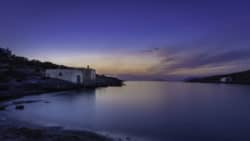About Kythira, Greece
Kythira is an island that is traditionally listed as one of the seven Ioanian island though distance-wise, it is apart from the rest of the  islands. The island is located between the island of Crete and the Greek mainland. From ancient times until the mid-19th century, the island was a crossroads of conquerors, sailors, and merchants. Thanks to this, the island has been influenced by a variety of cultures and civilizations, which can be seen in its architecture, customs, and traditions. The architecture is a blend of traditional, Aegean, and Venetian.
islands. The island is located between the island of Crete and the Greek mainland. From ancient times until the mid-19th century, the island was a crossroads of conquerors, sailors, and merchants. Thanks to this, the island has been influenced by a variety of cultures and civilizations, which can be seen in its architecture, customs, and traditions. The architecture is a blend of traditional, Aegean, and Venetian.
The island of Kythira has a rugged terrain due to the winds from surrounding seas. These winds have shaped the shores into rocky cliffs with deep bays. The island also experiences many earthquakes due to the Hellenic Arc Plate boundary zone nearby. Many earthquakes in the area have had their epicenter near or on the island. One of the largest earthquakes in recent times was the 1903 earthquake at the village of Mitata. One of the most recent earthquakes’ epicenter was in the sea approximately 20 km east of Kythira. This earthquake was felt as far away as Italy, Malta, and Jordan.
In classical times, the island of Kythira was part of the territory of several larger city-states. In the early 6th century, Sparta took the island from Argos. Athens would occupy the island three times while at war with Sparta. They would use it to support trade and to raid Laconia. After the Achaean defeat of Sparta, the island of Kythira would be independent, even issuing their own coins. Then during the time of Augustus, the island was subject to Sparta, becoming property of Gaius Julius Eurycles. Eurycles was both a Roman citizen and a Spartan magnate. Greek cities at this time were subject to the Roman Empire, which the island would continue to exist under.
Administrative Region of Kythira Island, Greece
Attica
Area of Kythira Island, Greece
Municipality: 300.0 km2 (115.8 sq mi)
Municipal Unit: 279.6 km2 (108.0 sq mi)
Population of Kythira Island, Greece
Municipality: 4,041
Municipal Unit: 3,973
Top Attractions in Kythira Island, Greece
The Cave of Agia Sophia – Located near Kapsali and Mylopotamos just above sea level. There are stalagmites and stalactites inside the cave. The cave is also home to a small Orthodox Church.
Castle of Chora – This Venetian castle dominates the village of Chora. The castle was built in 1503 on the site of the former Byzantine fortress from the 12th century. There are also churches in the area of the remains to see as well.
Cave of Agia Sofia – Located 20 km northwest of Chora. This stalagmite cave has a chapel that is dedicated to Agia Sophia. Story is that her body was found in the cave.
Ventian Castle – This castle was built by the Venetians in the 16th century. Its purpose was to protect the island from enemy attacks. The castle is found at the entrance of the Avlemonas harbour.
Agia Pelagia Beach – 26 km north of Chora. This is one of the few organized beaches on the island. The family friendly beach has a beautiful surrounding.
Lykodimou Beach – 25 km northwest of Chora. This beach is located in a cove with beautiful sand. The beach is secluded and not organized.
Lagkada Beach – 30 km north of Chora. This beach is close to a gorge, which people climb. Lagkada Beach is nudist friendly.
Archaeological Museum of Kythira – Museum is located in Chora. It houses Minoan vases, marble statues, and remains from the Archaic and Classical periods.
Byzantine Collection – Located in Livadi and housed in the post-Byzantine church of the Analipsi. Museum showcases rare and fragile paintings and frescos from other churches. Also featured are parts of an important early Christian mosaic.
Doakofti Beach – A long sandy beach the is partly organized. Located near the harbour of the island at Diakofti. An ideal beach for families as it is in a developed tourist area.

